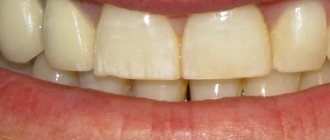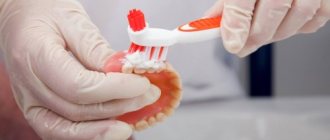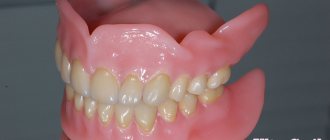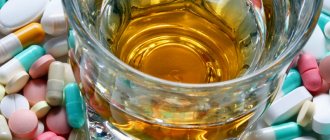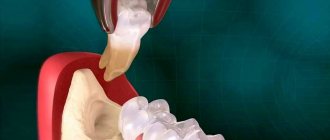After tooth extraction, especially if the procedure was complex, there is inflammation, swelling, suppuration in the mouth, you want to speed up the healing process of the wound and avoid complications from the appearance of pathogenic bacteria in it. To achieve this, surgeons often recommend mouth rinsing after surgery. But this does not always happen - sometimes the doctor will advise you not to do this.
Why is that? What is the correct way – when and with what to rinse your mouth after tooth extraction, and whether to rinse? We're talking to the doctors at the Family Smile dental clinic.
How does socket healing occur?
The tissues are restored within approximately 10-15 days. At least by this point, the pain will go away, and external changes will no longer cause you concern. Of course, this is a conditional framework - the healing process for each patient occurs individually. Not only the injured gum is restored, but also the bone tissue inside the hole from which the root was extracted. Below we list approximate deadlines for all stages. If your symptoms are shorter/longer, there is no need to panic - you need to evaluate the remaining symptoms: when there are no additional manifestations of pathology, it means that rehabilitation is going according to plan.
- first 3 hours: after tooth extraction, bleeding occurs - this is a common situation, since the tissues have been injured. The hole is completely filled with blood, which normally immediately coagulates - this is how a blood clot or blood clot is formed. It is extremely important for normal rehabilitation! In fact, it is a natural barrier against the penetration of bacteria into the wound. The color of the hole is dark red,
- the first 2-3 days: the dark blood clot persists and thickens, its size decreases. Granulation tissue begins to form inside the hole - young connective tissue, which will become the basis for the restoration of the mucous membrane,
- 3-7 days: the clot brightens and acquires a whitish color. Granulation tissue covers almost the entire socket. Swelling and pain should decrease or even go away completely,
- 7-10 days: the blood clot dissolves, the remains can be seen only in the center of the hole, which has decreased in size. New bone tissue begins to form under the healing gum, which in 4-6 months will fill the defect from the edges to the center,
- after 15 days: young pink mucous membrane covers the entire socket, superficial healing is complete.
What is Chlorhexidine?
"Chlorhexidine" is a clear liquid with a characteristic odor of ethyl alcohol, which has antimicrobial and antibacterial effects. The drug is used for antiseptic treatment of the skin and mucous membranes after surgical operations, for accidental injuries and injuries accompanied by a violation of the integrity of the skin: scratches, cuts, abrasions. The product can be used to disinfect hands if it is not possible to provide standard hygienic treatment with water and soap.
The mechanism of action of the drug on the bacterial cell
The active ingredient of the antiseptic is chlorhexidine in the form of bigluconate. The drug is available in several dosage forms for local and external treatment:
- spray;
- solution;
- vaginal suppositories (suppositories).
In dentistry, Chlorhexidine is used in the form of a spray and solution. It is used to treat hands, medical instruments, and is also used to disinfect the oral cavity after dental treatment using surgical methods. The effect of the drug lasts up to four hours after use.
"Chlorhexidine"
The active substance is active against most pathogenic microorganisms, which include gram-negative and gram-positive bacteria, various groups of viruses, yeast-like fungi, and dermatophytes. Chlorhexidine is especially effective for the prevention of dental infections caused by chlamydia and trichomonas.
"Chlorhexidine" after tooth extraction
What to prepare for after removal: what is considered normal, and when to urgently see a doctor
In order to prevent the development of dangerous situations after tooth extraction, you need to notice alarming signs, and even if they are mild, consult a doctor in time - this way you will avoid serious complications. This may be alveolitis, fistula, nerve damage and other pathologies. They cannot be stopped or cured at home.
In the table, we have listed the symptoms and explained in which cases they should alert you, and when the situation remains within the normal range.
What to prepare for after removal
| Symptom | Norm | Threat: You need to see a doctor |
| The gums are painful and swollen, the cheek is swollen and blue | Swelling and hematomas (bruises) are a natural reaction to injury, especially if the removal was difficult. They can intensify for up to 3 days, and then begin to subside | Does not go away for more than 4 days, gets worse or appears after sleeping - a feeling that the cheek is “blowing” |
| The wound is bleeding | Bleeding stops within the first hour after surgery. Further minor and rare discharge is possible | If the blood flows heavily for several hours or bleeding starts again at home - it is the abundance of discharge that should alert you |
| Presence of a blood globule in the socket | A dark red clot begins to form immediately after removal, fills the entire hole, and persists for up to 5-7 days | The hole is empty, “dry”, deep, a yellowish-grayish coating has appeared, there is an unpleasant putrefactive smell - this situation is called a “dry hole” |
| A white coating appeared on the wound | A whitish film appears on days 2-3 - this is the release of fibrin (a protein involved in tissue healing) | Yellow, greenish or dark gray color, as well as bad odor, redness and pain indicate the development of an infection |
| Discharge from the socket | Ichor is a clear liquid that can ooze from the wound in the first day | Cloudy pus with a putrid odor indicates an infectious process |
| The temperature has risen | Within two days (usually in the late afternoon) body temperature can rise to 38-39⁰С | The fever is severe, the temperature stays above 38⁰C for more than 2 days in a row or rises again after the condition has returned to normal |
| It is impossible to open your mouth wide, there is jaw clicking | It mainly happens after the removal of large teeth – molars, wisdom teeth. Symptoms may persist for up to 3 days (for complex operations - up to 7 days), then gradually subside | Difficulty opening the mouth persists for longer than 4 days, there are no positive changes, the pain intensifies |
| Pain at the site of the extracted tooth | Aching or pulsating - may be on days 1-3, but fades away every day | Lasts longer than 3 days or intensifies every day, spreads across the face, extends to the ear, neck |
| Part of the gum and cheek are numb | Normal for several hours after surgery - anesthesia continues to work | If the tissues have lost sensitivity for more than a day, the nerves may have been affected. Need to see a doctor |
| Running nose | Not the norm! Pain when blowing your nose and breathing, liquid discharge and runny nose are a symptom of complications during surgery | |
Contraindications
No need to rinse:
- if less than 24 hours have passed since surgery;
- if there was no medical prescription;
- with a sanitized oral cavity and a good state of the immune system, rinsing will do more harm than good;
Neglecting the doctor’s recommendations can cause consequences:
- Bleeding from the socket that occurs repeatedly.
- Development of inflammatory processes such as osteomyelitis and alveolitis.
- Suppuration of the soft tissues that surround the tooth.
This explains why and in what cases it is better not to rinse your mouth after removal.
How to ensure that there are no complications after tooth extraction?
At the first stage, you need to choose a doctor who will carry out professional and careful removal without severe tissue injury. It is important that the operation is performed not by a dental therapist, but by a dental surgeon or even a maxillofacial surgeon - an implantologist. It is a highly specialized doctor who knows how important it is to preserve the volume of bone tissue so that after this operation there are as few restrictions as possible for implantation.
The most important thing after the operation itself is to strictly adhere to the instructions and recommendations given by the doctor. If medications are prescribed, they must be taken for a strictly prescribed time. See our short checklist of what you can and cannot do after surgery, as well as detailed recommendations that will help you shorten the rehabilitation period and go through it without pain and complications.
7.High blood pressure.
In patients with high blood pressure, there is a risk that the wound may bleed longer than usual. In this case, you need to regulate the pressure by taking appropriate medications to reduce it. In our SDent dental medical center, even before the start of manipulations, the doctor always finds out the main points about the general health of the patient. If the patient has hypertension, the specialist knows about this problem in advance and then gives the necessary recommendations appropriate to the case.
A short checklist: a list of recommendations after tooth extraction
What can and should be done
- hold the cotton swab applied by the doctor for 20-30 minutes,
- within 2-3 hours after surgery, be sure to apply cold compresses to reduce tissue swelling,
- carry out oral baths (not to be confused with rinsing) with antiseptic drugs for 3-5 days: “Miramistin”, “Chlorhexidine 0.5%” or other drugs prescribed by a doctor can be used as medicinal solutions,
- after 3-5 days, start using a toothbrush - only a soft one for the operated area, as well as a new one, without bacteria on it. The teeth of the opposite jaw can be brushed immediately, the main thing is to avoid the area of the extracted tooth,
- chew food on the side opposite the injured area,
- You can drink water immediately, preferably warm water,
- You can eat only after the anesthesia wears off, that is, after 2-3 hours,
- Lead a quiet lifestyle, try to avoid physical activity and heavy lifting for 5-7 days.
What you should absolutely not do
- don't rinse your mouth! Mouth baths in the first 3-5 days are more than enough,
- do not use hot compresses! This is fraught with the appearance of edema and the development of inflammation,
- do not create a vacuum in your mouth: do not puff out your cheeks, sneeze, blow your nose and spit very carefully,
- do not pick the wound, do not touch the clot with your tongue,
- do not drink or eat hot or cold food, only warm food,
- try to quit smoking for at least 2-3 days after surgery,
- Do not drink alcohol for 2-3 days - it does not promote tissue repair. Also exclude it if the doctor has prescribed a course of antibiotics,
- Do not overcool or overheat - give up sports exercises, swimming pools, saunas for 5-7 days.
Indications
If the tooth extraction was planned, it did not hurt, there was no purulent discharge, then there is no point in rinsing. In a healthy person with a strong immune system, overgrowth occurs on its own, without additional manipulation.
The main indication for performing such a procedure is the order of the surgeon who performed the removal. When pus is found in the hole during extirpation, the doctor prescribes medications and explains how to make oral baths.
Rinsing will be beneficial and promote speedy healing in the following cases:
- Inflammatory phenomena - if the tooth was very painful before, there was swelling, pulsation or an increase in temperature - these are signs of the accumulation of purulent exudate.
- Periostitis - when, simultaneously with tooth extraction, an incision was made on the gum due to “flux”.
- Decayed teeth - if there are carious lesions and other sources of infection in the mouth, then rinsing will protect the hole from infection.
Thanks to rinsing, pathogenic microorganisms die, but you should always remember that such manipulation should be gentle and, hiding behind the imaginary benefits, not cause even more harm.
The most complete reminder for patients after tooth extraction
So, you left the doctor's office - the surgeon asked you to tightly squeeze a gauze pad with your teeth, which will help stop the bleeding. You need to hold it for about 20-30 minutes, that is, while you fill out the necessary documents at the clinic or go home. Remove the tampon carefully, moving it slightly to the side, without sudden movements, so as not to damage the fresh blood clot.
Very important! A thrombus (usually called a “blood clot”) protects the wound from microbes and prevents pieces of food and saliva from accumulating in the hole during the first week of rehabilitation. This is a natural sterile dressing that starts the process of new tissue formation. The most important rule that will protect you from complications and severe inflammation of the wound is to never remove the clot, do not touch it with your tongue or fingers, do not touch it with a toothbrush and protect it from other influences. Gradually it will resolve on its own.
Do not keep the tampon in place for more than 30 minutes - gauze soaked in blood and saliva will quickly become a breeding ground for infection. In addition, a blood clot is forming in the hole - the presence of a foreign body and additional injury are of no use to it. You need to give the wound the opportunity to heal naturally.
“If you have a complex tooth extraction, especially if you had surgery to remove wisdom teeth, or if you have an underlying condition, such as diabetes, you may need to observe a doctor for a few more hours. For this purpose, we have our own hospital, where you can sit comfortably and relax while we monitor your condition to see if there are any complications. This will give us confidence that the operation will be successful and will reassure you as the patient.”
Vasiliev Alexander Alexandrovich, implant surgeon, more than 10 years of experience make an appointment
Tooth extraction WITHOUT complications! The modern equipment of our clinic allows us to carry out the most accurate and comprehensive diagnostics. Consultation is free!
Sign up online
Swelling after tooth extraction (especially if it was complicated) can be prevented by applying a cold compress - to do this, wrap an ice pack from the freezer in a towel and apply it to the cheek (that is, from the outside) for no more than 20 minutes. After 15 minutes the procedure can be repeated. If you don't have ice on hand, frozen vegetables or meat will do, but be sure to wrap them in a bag and a towel to avoid cold burns. Cold constricts blood vessels, reduces pain and swelling, although it does not completely remove swelling. Compresses are effective immediately after surgery for approximately 3-4 hours.
Do not warm up the injury site under any circumstances! A hot compress will only make the swelling worse by increasing blood flow to the area of inflammation. This will lead to serious complications after surgery.
If there is blood coming from the hole -
There are several effective methods to stop bleeding.
Most often, the wound bleeds in people who have high blood pressure (hypertension). However, a rise in blood pressure can be triggered in completely healthy people due to psychological stress. The first thing to do is to apply a tightly twisted swab of sterile bandage to the wound, and then immediately measure the pressure. And if it is elevated, take the appropriate drug. For more information on how to stop bleeding, read the article: → “How to stop bleeding from a tooth socket at home”
If you have high blood pressure -
If you regularly measure your blood pressure, if it is higher than normal, take the appropriate medication. Otherwise, there is a very high risk of bleeding or hematoma formation. The first can lead to weakness and dizziness, and the formation of a hematoma is fraught with its suppuration and the need to open it.
If you have diabetes -
If you have a device for determining blood sugar, it is advisable to immediately measure your sugar. The stress of removal contributes to the release of adrenaline, the concentration of which largely determines blood sugar levels. This will help you prevent feeling unwell.
Removing sutures after removal –
After tooth extraction, the sutures are usually removed no later than 7-8 days. However, removal of sutures may not be necessary if, for example, catgut is used as a suture material. This material dissolves on its own within 10 days. When you see that the seams are very loose, you can simply remove them with clean fingers.
Treatment of teeth after extraction –
It is advisable to continue treatment after tooth extraction no earlier than 7 days later. If the removal was difficult, then sometimes it may take up to 14 days. This is due to the fact that carious teeth contain a lot of pathogenic infection, which, when drilling a tooth, can easily get into a blood clot and lead to suppuration.
When can you eat and drink after surgery?
You should not strictly limit yourself in nutrition, you will need strength to recover - you can eat as soon as the anesthesia wears off, namely after 2-3 hours. You can drink it immediately after you remove the cotton swab. Until this point, it is undesirable for food particles or bacteria to get into the open hole.
In the first 3-5 days, you need to take into account several nuances in nutrition so that further healing of the wound goes well:
- food should be warm. Hot or cold food will irritate tissues and cause blood vessels to dilate or constrict, which can cause new bleeding,
- It is better to exclude rough food to avoid mechanical damage to the wound. Soups, purees, baked and boiled foods, minced meat dishes,
- Do not chew food on the side where the tooth was removed to keep the protective clot intact.
Carefully! Many people mistakenly believe that in the first days it is better to drink and eat liquid foods through a straw. But in fact, suction creates a vacuum in the mouth, which can displace the clot or disrupt its integrity. Should not be doing that. For the same reason, you should not spit or suck in your cheeks.
1. A gauze swab on the hole. When can it be taken out?
As a rule, the doctor does not immediately release the patient after removal, but asks him to wait for 15-20 minutes within the clinic to then examine and make sure that everything is in order with blood clotting and the tampon can be removed without fear. In rare cases, keeping the tampon in your mouth may take 30-40 minutes, usually 10-20 minutes. There is no need to keep it longer and it is even dangerous, because bacteria accumulate on it and there is a possibility of infection. There are exceptions, when the wound continues to bleed a little, then the old tampon is replaced with a new sterile one and kept for some time.
For some time, saliva may still be pinkish due to staining with secreted ichor, this should not be alarming, this situation can be distinguished from bleeding. At this moment, saliva can be easily swallowed; there is no need to accumulate it in the mouth.
How to do oral hygiene
The main task is to preserve the blood clot on the wound of the extracted tooth, while maintaining cleanliness and health in the mouth. How to properly care for your teeth during this period:
- There is no need to carry out any hygiene procedures immediately after tooth extraction. It is better to postpone the first brushing of your teeth until the next morning. You will need a brush with soft bristles. And it’s better to take a new one so that it is sterile. You need to brush your teeth with a small amount of paste, avoiding the wound area, and clean adjacent teeth with caution.
- Do not rinse your mouth (including after brushing your teeth) or use an irrigator in the first three days! The clot may dissolve or be washed away with the flow of fluid, and treatment will have to be restarted. Instead of rinsing, make mouth baths - just take water into your mouth and carefully spit it out. If the doctor prescribes antiseptic drugs, rinse with them,
- try not to touch the open wound with your tongue, hands or toothpick - this can damage or dislodge the clot and introduce an infection into the hole.
You can’t neglect hygiene - bacterial plaque will accumulate in your mouth, which can cause inflammation.
Painkillers –
If the extraction was simple, you may not need pain relief after tooth extraction. But if you want to completely prevent the appearance of pain, then it is better to take a strong tablet analgesic even before the anesthesia wears off (which one is better to choose - see the link, but remember that after removal you cannot take aspirin).
Sometimes the pain is very severe. As a rule, this happens if the removal was performed by a doctor in a very traumatic way or if inactive bone fragments were left behind. The pain is most severe when the doctor used a drill to drill out the bone, and water cooling was not used (this leads to necrosis of bone tissue as a result of overheating).
Important: numerous studies show that the severity of pain after tooth extraction is reduced by an average of 30-50% if the doctor places sutures on the socket of the extracted tooth. In addition, bringing the edges of the mucous membrane together by applying sutures helps protect the blood clot from loss and injury, sharply reduces the risk of developing inflammation of the socket, and almost completely eliminates the occurrence of bleeding.
After a simple simple extraction, most dental surgeons very rarely use sutures. I can recommend for the future - always before removal, ask your surgeon to put 1-2 stitches on you, even if the removal is simple, and even if you have to pay an extra 300-400 rubles for it. As a rule, sutures do not have to be removed (they dissolve on their own), but they will reduce pain and reduce the risk of complications.
Medicines after tooth extraction: what to take at home
To prevent complications, your doctor will prescribe home remedies for you. Which medications you can take depends on your specific situation, body characteristics, allergic reactions and possible concomitant diseases.
How to reduce pain after tooth extraction
Your doctor will recommend the medications to you. You should take painkillers as needed - at night or when the anesthesia wears off. If the pain becomes severe in the first days, you can take analgesics prescribed by your doctor every 4-6 hours, but no more than 4 days in a row.
Important! Do not take aspirin or other blood thinners.
What antibiotics should you take?
Antibacterial drugs are needed if the immune system itself cannot cope with pathogenic microbes, and infectious inflammation begins. But antibiotics suppress the activity of “good” microorganisms and also have many side effects. Therefore, they are prescribed strictly based on health conditions at the time of tooth extraction and how the operation went. As a rule, they are necessary if there is concomitant inflammation in the oral cavity, an infectious process in the acute stage in the body as a whole, or if a large number of teeth were removed at once.
When receiving a further treatment plan, you need to purchase medications immediately, without delay, so that you can help yourself in case of increased pain and discomfort. The doctor’s recommendations must be strictly followed, avoiding “amateur activities.”
Therapeutic oral baths during tissue restoration
Intense rinsing is prohibited - this way the solution can wash out the blood clot and expose the socket, causing the tissue to become inflamed and difficult to heal. Rinses are replaced with medicinal baths. For this, both plain water and antiseptics prescribed by the attending physician are suitable: a solution of “Chlorhexidine” 0.05% (in this concentration it is sold in a pharmacy) or “Miramistin” you just need to hold it in your mouth for about 30-60 seconds, and then spit it out. You need to repeat the procedure after meals, 3 times a day.
Such baths will become a mandatory component of the prevention of inflammation if you have the following problems in the oral cavity:
- other teeth are damaged by caries or have tartar on them. Pathogenic microorganisms in sediments can lead to the development of alveolitis,
- cuts were made on the gums to expose the gumboil,
- under the extracted tooth or the tissue nearby was inflamed.
Rehabilitation without complications! We use modern equipment and materials to ensure that even complex tooth extractions are carried out with minimal trauma.
Enroll now
What to do with a gauze swab -
A tooth was removed today: what to do after removal with a gauze swab on the socket... A swab soaked in blood is an excellent breeding ground for infection. And the longer you keep it in the mouth, the greater the risk of developing inflammation in the socket of the extracted tooth. If you still have a gauze swab on your socket, you need to remove it urgently. It is advisable to do this without jerking and not strictly vertically, but sideways (so as not to pull out the blood clot from the hole along with the tampon).
An exception may be a situation where the hole is still being touched up - in this case, the gauze swab can be held for a little longer. But it’s best to spit out this old gauze swab soaked in saliva and blood, make a new one from a sterile bandage, and place it on top of the hole (biting firmly).
Important: saliva at first may normally turn pink due to the secretion of ichor (this should not be confused with bleeding). At the same time, it is not clear why many patients stop swallowing saliva and accumulate it in the oral cavity. There is absolutely no need to do the latter; saliva can be swallowed as usual.
General recommendations after surgery
On the first or second day after tooth extraction, you want to lie down and sleep - this is the body’s natural reaction to the stress experienced. After the release of stress hormones - adrenaline and cortisol - stabilization and rest are needed. Don't deny yourself this.
However, there are recommendations regarding sleep: you should raise the pillow higher and sleep reclining so that your head is elevated. This will prevent unnecessary pressure on the jaw and cause bleeding. To increase the inclination of the bed, place a pillow under the mattress or use two pillows.
Otherwise, maintain a calm regime without physical overload, pressure surges and overheating. That is, for the first time it is better to refuse air travel, hard work, playing sports and lifting weights, visiting the pool, bathhouse or sauna. You should not take a hot bath (a short warm shower would be preferable) and stay in the sun for a long time or sunbathe in a solarium. All this increases blood pressure, which is fraught with new bleeding. It is ideal if you have a couple of days off to recover after your teeth are removed.
You can cool it, but you can’t heat it up.
A cold compress will help reduce swelling and bleeding. But it should be used only on the recommendation of a doctor. Cold is applied through a thin cloth and held for no more than 25 minutes, otherwise hypothermia will occur, which can lead to unpleasant consequences.
Overheating can lead to inflammation or secondary bleeding. Therefore, for some time you need to forget about a hot bath, solarium.
Frequently asked questions after tooth extraction
In this section, we answered the most popular questions that arise in the first days after tooth extraction.
How long will the wound bleed after tooth extraction?
The appearance of blood after removing a tooth from the socket is a normal phenomenon, since the periodontal tissues are penetrated by many capillaries and vessels.
When they are injured, even minimally, the hole fills with blood necessary for the formation of a blood clot. Normally, this occurs within 20-30 minutes and depends on the individual characteristics of blood clotting. Minor, very light bleeding may occur for another 2-3 days after surgery. It is important to distinguish blood from ichor - a clear liquid, slightly yellowish in color. Due to the small amount of blood, it can sometimes be pinkish. Ichor can normally be released from the socket within 12-14 hours after tooth extraction.
But if, 3-5 hours after the operation, the bleeding not only does not decrease, but also intensifies, you need to consult a doctor.
I removed the tampon from the wound 20 minutes after the operation, but the wound is still healing. What to do?
If the wound is still bleeding a little after removing the compress, you can apply another swab of sterile gauze (available at the pharmacy). It is lightly moistened with boiled water or chlorhexidine, applied to the wound and the jaws are squeezed tightly. Also, do not keep the new tampon in place for more than 20 minutes, so as not to provoke the development of infection.
Blood flows for more than 3 hours. This is fine?
You should immediately consult a doctor in the following situations:
- bleeding does not subside in the first 30 minutes and continues for several hours or even days,
- secondary bleeding: in the dentist’s office the hole stabilized, and when you returned home, the bleeding started again, and quite profusely and for a long time.
The reasons are different: taking certain medications (for example, blood thinners or hormonal drugs), menstruation in women, hypertension, diabetes mellitus, abnormalities in blood clotting and other blood diseases, drinking alcohol on the eve of extraction, as well as violating the dentist’s recommendations. Therefore, it is important to inform your doctor in advance about your existing diseases and medications, so that the doctor can prevent an unfavorable outcome.
When will my stitches be removed after surgery?
The wound is stitched for a more reliable connection of the alveolar walls and faster healing. You usually do not need to have your stitches removed by a doctor. We use special surgical threads that dissolve after 7-10 days and eliminate the need to return to this issue. If nothing bothers you and the stitches look healthy, then you don’t need to see a doctor.
Why didn’t the surgeon stitch up my wound after the tooth extraction?
The doctor always evaluates how the situation is developing - how extensive the intervention was, whether the gum had to be cut, how many roots the tooth has, how quickly the blood clots. If the wound is small and the prerequisites for healing are normal, then stitches are not necessary.
Is it possible to drink alcoholic beverages after tooth extraction?
We understand that amid the stress experienced, for some, a natural impulse is to relax with the help of alcohol, especially if the tooth extraction was difficult. But the answer is clear - no. Alcoholic beverages should not be consumed 24-48 hours before removal and for at least 2-3 days after surgery. Due to the dilation of blood vessels under the influence of alcohol, bleeding will open again in the hole, and a hematoma may appear on the mucous membrane. And if you have been prescribed antibiotics, then combining alcohol with them is dangerous, and alcohol is contraindicated until you finish taking the medication.
Is it possible to smoke regular cigarettes? What about electronic cigarettes, hookah and vaping?
Smoking in the first 2-3 days after tooth extraction has an adverse effect on the condition of the wound. Nicotine causes a sharp contraction of blood vessels, and the tars and chemical compounds that make up cigarettes irritate the mucous membrane and slow down healing. If stitches were placed, we do not recommend smoking for 2-10 days after tooth extraction.
Hookah mixtures contain glycerin, which causes tissue dehydration. E-cigarette formulations use propylene glycol, which is converted into toxic compounds that inhibit nerve impulses. Many people believe that vaping is safer than regular cigarettes, but there is still an additional chemical load on the wound. So the restrictions on hookah, vaping and electronic cigarettes are exactly the same as on tobacco - try not to smoke for several days after tooth extraction.
It has been proven that the risk of alveolitis - an infectious inflammation of the tooth socket - increases by 40% if the patient smoked immediately before tooth extraction1.
After a tooth was removed, caries was discovered on the adjacent one. Can it be cured immediately?
It is better to postpone treatment of other teeth or professional hygiene after tooth extraction for two to three weeks, unless otherwise indicated by a doctor. The fact is that when drilling a carious cavity or cleaning deposits, pathogenic microflora can enter the wound and cause its inflammation. But in some cases, when treatment is absolutely necessary, an experienced doctor will take measures to protect the socket using special membranes and protective devices.
I have problems with blood pressure. Is it possible to have surgery?
If you have problems with blood pressure, you need to monitor it regularly. Before tooth extraction and during the recovery period, you will need to take additional medications prescribed by your doctor in order to normalize your condition and indicators.
I have diabetes, but they recommended that I have a tooth removed. Is it dangerous?
If you have been diagnosed with diabetes, you probably have a blood sugar monitor. It is important to maintain normal indicators and take into account additional rules:
- Tooth extraction is possible at the stage of disease compensation, when sugar levels are stable for several months. In the decompensated stage, elective operations are not performed due to the risk of bleeding and the body’s reaction to anesthesia,
- you should go for an operation to remove teeth in the morning,
- Immediately before tooth extraction, it is better to administer an increased dose of insulin to prevent a spike in sugar.
Due to stress before surgery, sugar levels may increase, so it is better to consult with an endocrinologist in advance about which drug to take to avoid a sharp jump in blood sugar. You also need to know that rehabilitation after tooth extraction in patients with diabetes mellitus is slower.
How long should I use a soft brush after surgery?
After the wound has healed, that is, after 2-3 weeks, you need to return to a regular brush of medium hardness - a soft toothbrush copes worse with plaque, and if there are no open wounds in the mouth, there is no need for it.
After the operation, the skin on my lips became dry and cracked, and herpes developed. What's the matter?
Dry lips occur due to a long stay in the dentist's chair (if many teeth were removed or the procedure was complex). Herpes can worsen due to decreased immunity (usually due to an acute stressful situation).
Smile without embarrassment and without “holes” in the row! More than 30 implantation solutions. Restoring your teeth immediately after extraction in just 1 day! Get started with a free consultation.
Enroll now
Is it possible to brush your teeth
Oral hygiene must be observed. But there are a few points worth paying attention to:
- Do not touch the hole with the brush,
- reduce the amount of paste,
- rinse your mouth very carefully and slowly.
And one more thing: never take medications without a doctor’s prescription. In simple cases, medications will not be needed, at most a light pain reliever. In difficult cases, the dentist will prescribe an antibiotic and an antihistamine.
Using these recommendations, you will survive tooth extraction easily and unnoticed. If you have any other questions, call ART Dent dentistry, our specialists will definitely help you.
Consequences of tooth loss: what happens to the bone and how to preserve it?
Even if only one tooth is removed, the situation with the jaw in this place immediately begins to deteriorate - the bone no longer receives the chewing load, metabolism stops in it, and the area of bone tissue under the tooth begins to sag, that is, atrophy.
This is a rapid process - bone loss can reach 30% in the first year alone. Subsequently, it will be problematic to place an artificial tooth supported on an implant in this place, both due to the constant subsidence of the bone and gums, and due to the displacement of neighboring teeth. They lose support, so they shift and tilt into the resulting “emptiness” - this is how problems with bite develop.
To prevent bone atrophy, especially during complex extractions of multi-rooted teeth, it is recommended to install a bioframework or replant a biocompatible artificial bone material with the application of a membrane. Thus, the bone volume and height of the alveolar ridge are maintained sufficient for future unhindered dental implantation.
Precautions and tips for use
During the procedure, you should avoid getting the product into the digestive tract - this can lead to irritation of the mucous membranes of the stomach and intestines and cause inflammation of the surface layer of the gastrointestinal tract. Also, you should not use the drug for longer than the permissible period. Too long use of products based on chlorhexidine digluconate can lead to the destruction of beneficial oral flora and the development of dysbacteriosis.
Antiseptic "Chlorhexidine"
Dysbacteriosis of the oral cavity is accompanied by an unpleasant odor from the mouth, a dense coating on the inner surface of the cheeks and tongue, and other symptoms. Pathology is the main cause of stomatitis - inflammation of the mucous membranes of the oral cavity, most often of an infectious nature.
- Rinse after tooth extraction to heal gums
Before rinsing, it is important to maintain an hour's interval with hygiene measures, since the active ingredient "Chlorhexidine" is incompatible with some types of chemicals that may be included in toothpastes, powders and rinses. These include:
- colloids;
- alkaline compounds;
- carboxymethylcellulose;
- soap;
- gum arabic, etc.
"Chlorhexidine" is one of the most effective and popular antiseptics
Note! After rinsing your mouth with Chlorhexidine, you should not eat or drink for 1-1.5 hours. Eating foods earlier will reduce the effectiveness of the procedure.
Visiting the dentist

